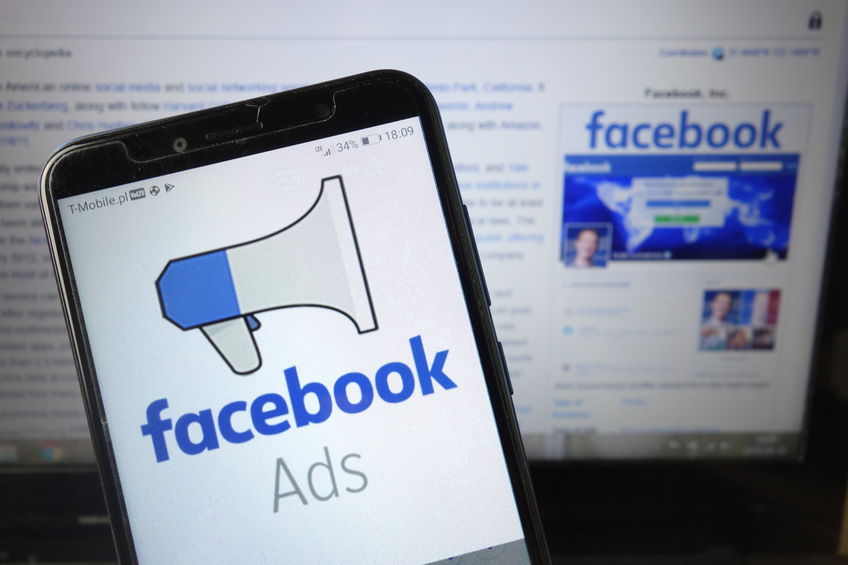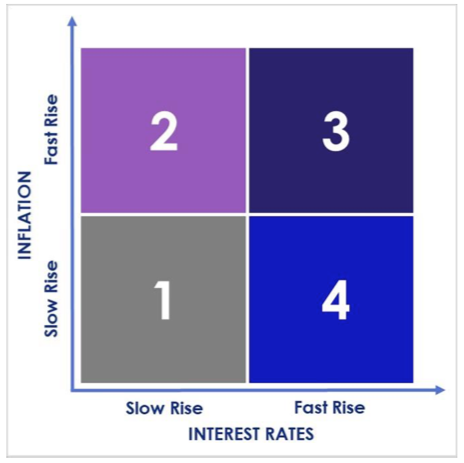Leasing
Facebook Ads Don’t Work For Finance?
March 29, 2021 In an op-ed by Brittney Holcomb in Leasing News, Holcomb wrote that “when it comes to developing lead generation, social networks are not the answer.”
In an op-ed by Brittney Holcomb in Leasing News, Holcomb wrote that “when it comes to developing lead generation, social networks are not the answer.”
Holcomb breaks down her reasoning, explaining that Likes do not equal leads. It’s worth a read if you have advertised or have thought about advertising on Facebook, but I will respectfully disagree with her on the basis of her arguments.
“People don’t log on to social networks to search for products or services,” she writes, “They use social media to communicate with their friends and family.”
Perhaps so, but there are many different ways in which to approach Facebook advertising, and I say this as someone who has had success advertising in the B2B universe on the platform. Users weren’t searching for my product or service either and I wasn’t advertising for the sake of branding, something I personally do not even consider doing.
You can use social networks like Facebook to convert a lead you almost got or lost. For example, not everybody that comes to your website ends up completing a form and for those that do, fewer yet will end up signing a contract.
What happens is your prospects get distracted, decide to do more research, or get wooed by a competitor. Maybe they just weren’t convinced the timing was right. This is where social network advertising comes into play because you can relay that website visitor data or unclosed leads to Facebook and serve ads ONLY to those prospects. By knowing exactly where your prospect left off with you, you can set your campaigns to target them with the most appropriate advertising. That prospect might not be searching for your product on Facebook (just as Holcomb suggests), but you can appear right there like magic in their feed to remind them of exactly where they left off last time they engaged with you.
You can pretty much do anything you want especially if you’re actively managing and monitoring your web traffic and analytics.
Maybe you only want to serve ads to visitors who didn’t fill anything out on your website but clicked around for more than 2 minutes. Worth a shot, perhaps?
Consider the person shopping around who spent a few minutes researching a financial solution on three different company websites. They don’t fill anything out but instead resolve to make a decision on where to apply in the next couple days. That night and each night thereafter, one of those companies appears in their Facebook feed constantly, telling them why they’re better than the competition or that they’re the goto-brand. It’s an ad, yes, but it creates the impression that this company is everywhere and can place them top of mind when it’s time to decide. That can be money well-spent. It’s also the fundamental way in how social media advertising works these days, which is why we sometimes get creeped out by how well ads seem to know us. Anyone can do this.
Admittedly, one might not have any leads to target on social media if they don’t have website visitors to begin with, hence why paid search would be a better medium to choose if given the option between one versus the other.
I believe the two are not mutually exclusive, however. First get the prospects to your website (be that through paid search or organic means or whatever), and then close those prospects through social network advertising. Your competitors are already doing it and that’s why some of them are doing so well.
Facebook Ads Can Work For Finance. They just have to be properly tailored. And once you get it right, you’ll be kicking yourself for not having taken advantage of it for so many years.
Interest in Equipment Finance M&A is Strong
July 19, 2018
Interest in mergers and acquisitions (M&As) in the equipment finance industry has been high in the first half of 2018, according to The Alta Group, a consultancy dedicated to equipment leasing and asset finance.
This follows a May 22 Reuters report announcing that global M&As reached $2 trillion in 2018, which at the time of publication, was a record for the value of deals in that period. This record was achieved in part by the $11.1 billion merger of GE’s (GE.N) transportation business with rail equipment maker Wabtec (WAB.N).
Echoing the robust global M&A climate, Cincinnati-based Verdant Commercial Capital, a large commercial equipment finance company, announced on Monday that it had acquired Intech Funding Corp., which does financing and leasing for manufacturing companies. (The Alta Group was involved in this acquisition). No financial terms were disclosed for this acquisition.
“Several of our clients had not considered selling their businesses yet,” said Bruce Kropschot, Senior Managing Director of The Alta Group, “but M&A market conditions are so favorable now they concluded they could not risk missing out on the opportunity to sell while prices were high and there were many interested acquirers.”
In a statement, Kropschot attributed this favorable climate for M&As to “the relatively high multiples reflected in the stock market and the M&A market, interest rates that are still quite low, substantial liquidity in corporations and financial institutions, and the recent tax legislation with its lower corporate income tax rates and 100% expensing on equipment purchases.”
The Alta Group has clients throughout the world and has been representing equipment leasing and finance companies since 1992. It is headquartered in Glenbrook, Nevada and employs 60 consultants worldwide.
Equipment Leasing Report Foresees Rising Inflation and Interest Rates
June 12, 2018 The Equipment Leasing and Finance Foundation issued a report called “How Inflationary Pressures and Rising Interest Rates Could Impact the Equipment Finance Industry.”
The Equipment Leasing and Finance Foundation issued a report called “How Inflationary Pressures and Rising Interest Rates Could Impact the Equipment Finance Industry.”
Given its name, the report is fairly self-explanatory. Its premise is that within the next one to three years there is likely to be a rise in inflation and interest rates which may affect the equipment finance industry, including customer demand, portfolio performance, spreads, and the propensity to finance.
The report conveys three potential scenarios regarding inflation and interest rates. Scenario #1 is “Status Quo,” or a continuation of low interest rates and inflation levels. This would place the economy in quadrant 1 of the accompanying chart.
Scenario #2 is “Breakout Inflation Prompts Strong Fed Response.” According to the report, in this scenario, inflation rises quickly, moving in quadrant 2. Then, in order to slow inflation, the Fed raises interest rates and the economy moves into quadrant 3.
What would this Scenario #2 look like for the equipment leasing industry? Among other outcomes, the report said that “equipment end-users are better able to make payments when their revenues are being driven up by higher prices, but their equipment payments are fixed.” This is a good thing for the industry, but may be a double-edged sword because, with more cash on hand, customers may be more likely to buy equipment, rather than lease it.
Scenario #3 is “Aggressive Fed Action While Inflation Lags.” This would put the economy in quadrant 4 with rising interest rates, but slow inflation. According to the report, this could create an environment where “real interest rates are rising in the absence of persistently strong economic growth, [and] business confidence is likely to fall.” This would translate to a falling demand for investment and a decline for the industry.
Established in 1989, the Equipment Leasing & Finance Foundation is a non-profit dedicated to inspiring innovation and contributing to the improvement of the equipment leasing and finance industries.





























